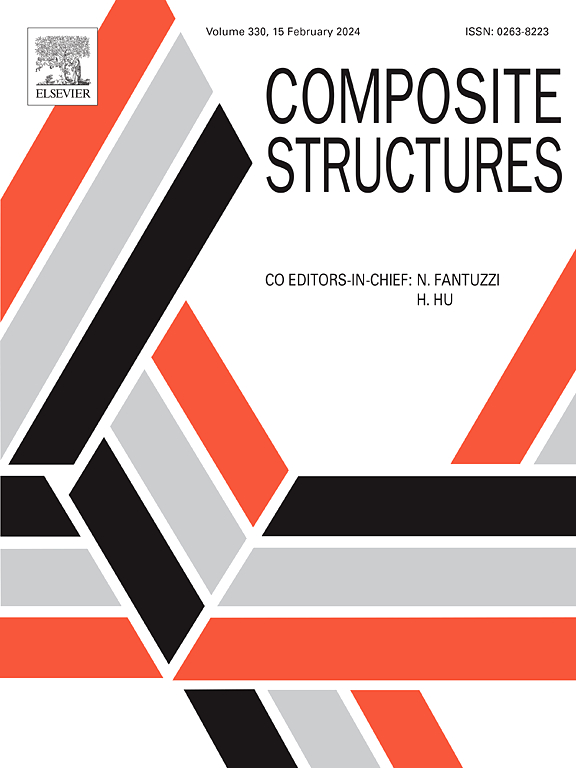Geometrically nonlinear analysis of composite beams based on global–local superposition
IF 6.3
2区 材料科学
Q1 MATERIALS SCIENCE, COMPOSITES
引用次数: 0
Abstract
A composite beam finite element is designed to capture through-thickness effects, specifically normal stress and strain and transverse shear, in the context of geometrically nonlinear analyses. The starting point for the formulation is a similar element already proposed for linear analyzes based on a global–local superposition approach, where local functions are defined in each layer of the laminate, and global functions are defined along the thickness. The consistency of the kinematic hypotheses is guaranteed by imposing the continuity equations of displacements through the thickness, the force balance equations along the thickness, directly or indirectly, by imposing the continuity of transverse stresses, and by applying the boundary conditions on the lower and upper surfaces of the elements. In the context of nonlinear analyzes, the imposition of continuity of displacements is straightforward. However, the continuity of the transverse stresses needs to be carefully imposed, as the relevant stresses are the second order Piola-Kirchhoff stresses and the strains are the Green-Lagrange strains, consistent with the total Lagrangian approach used. The constitutive equations are written in incremental form and a detailed analysis is conducted to ensure that the stresses and strains involved are physically consistent across the different reference frames employed. In order to assess the accuracy of the numerical model implemented, a unique semi-analytical technique is developed to obtain the response of asymmetrical laminated beams under compression.
基于全局-局部叠加的组合梁几何非线性分析
在几何非线性分析的背景下,组合梁有限元设计用于捕获贯穿厚度效应,特别是法向应力和应变以及横向剪切。该公式的出发点是基于全局-局部叠加方法的线性分析中已经提出的类似元素,其中在层压板的每一层中定义局部函数,并沿厚度定义全局函数。通过直接或间接地施加位移沿厚度的连续性方程、沿厚度的力平衡方程、施加横向应力的连续性以及在单元的上下表面上应用边界条件,保证了运动学假设的一致性。在非线性分析的背景下,位移连续性的施加是直接的。然而,横向应力的连续性需要小心地施加,因为相关应力是二阶Piola-Kirchhoff应力,应变是格林-拉格朗日应变,与所使用的全拉格朗日方法一致。本构方程以增量形式书写,并进行了详细的分析,以确保所涉及的应力和应变在不同的参考系中是物理一致的。为了评估所实现的数值模型的准确性,开发了一种独特的半解析技术来获得不对称层合梁在压缩下的响应。
本文章由计算机程序翻译,如有差异,请以英文原文为准。
求助全文
约1分钟内获得全文
求助全文
来源期刊

Composite Structures
工程技术-材料科学:复合
CiteScore
12.00
自引率
12.70%
发文量
1246
审稿时长
78 days
期刊介绍:
The past few decades have seen outstanding advances in the use of composite materials in structural applications. There can be little doubt that, within engineering circles, composites have revolutionised traditional design concepts and made possible an unparalleled range of new and exciting possibilities as viable materials for construction. Composite Structures, an International Journal, disseminates knowledge between users, manufacturers, designers and researchers involved in structures or structural components manufactured using composite materials.
The journal publishes papers which contribute to knowledge in the use of composite materials in engineering structures. Papers deal with design, research and development studies, experimental investigations, theoretical analysis and fabrication techniques relevant to the application of composites in load-bearing components for assemblies, ranging from individual components such as plates and shells to complete composite structures.
 求助内容:
求助内容: 应助结果提醒方式:
应助结果提醒方式:


